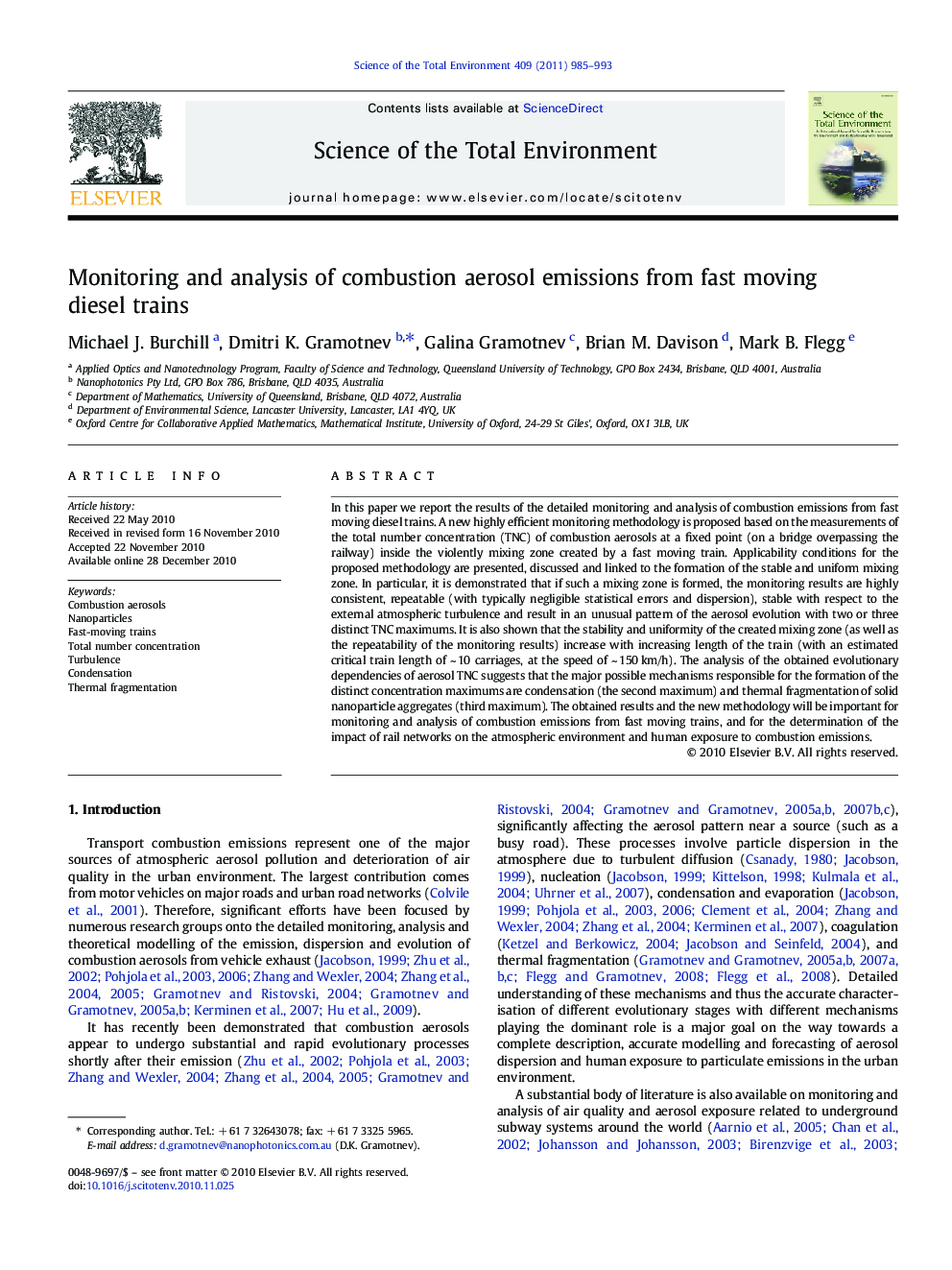| Article ID | Journal | Published Year | Pages | File Type |
|---|---|---|---|---|
| 4430418 | Science of The Total Environment | 2011 | 9 Pages |
In this paper we report the results of the detailed monitoring and analysis of combustion emissions from fast moving diesel trains. A new highly efficient monitoring methodology is proposed based on the measurements of the total number concentration (TNC) of combustion aerosols at a fixed point (on a bridge overpassing the railway) inside the violently mixing zone created by a fast moving train. Applicability conditions for the proposed methodology are presented, discussed and linked to the formation of the stable and uniform mixing zone. In particular, it is demonstrated that if such a mixing zone is formed, the monitoring results are highly consistent, repeatable (with typically negligible statistical errors and dispersion), stable with respect to the external atmospheric turbulence and result in an unusual pattern of the aerosol evolution with two or three distinct TNC maximums. It is also shown that the stability and uniformity of the created mixing zone (as well as the repeatability of the monitoring results) increase with increasing length of the train (with an estimated critical train length of ~ 10 carriages, at the speed of ~ 150 km/h). The analysis of the obtained evolutionary dependencies of aerosol TNC suggests that the major possible mechanisms responsible for the formation of the distinct concentration maximums are condensation (the second maximum) and thermal fragmentation of solid nanoparticle aggregates (third maximum). The obtained results and the new methodology will be important for monitoring and analysis of combustion emissions from fast moving trains, and for the determination of the impact of rail networks on the atmospheric environment and human exposure to combustion emissions.
Research Highlights► We study evolution of particulate emissions from fast moving diesel trains. ► A new monitoring methodology is based on number concentration in the mixing zone. ► Evolution pattern displays repeatable concentration maximums after a passing train. ► Interpretation is mainly based upon the condensation and evaporation mechanisms.
